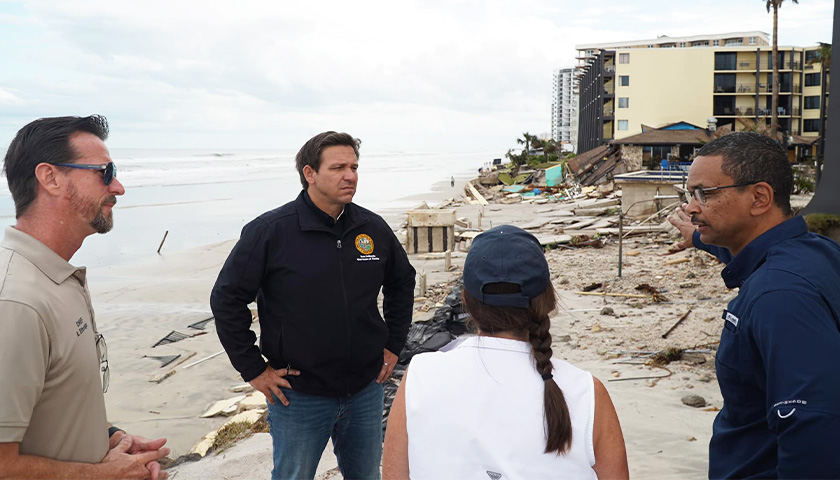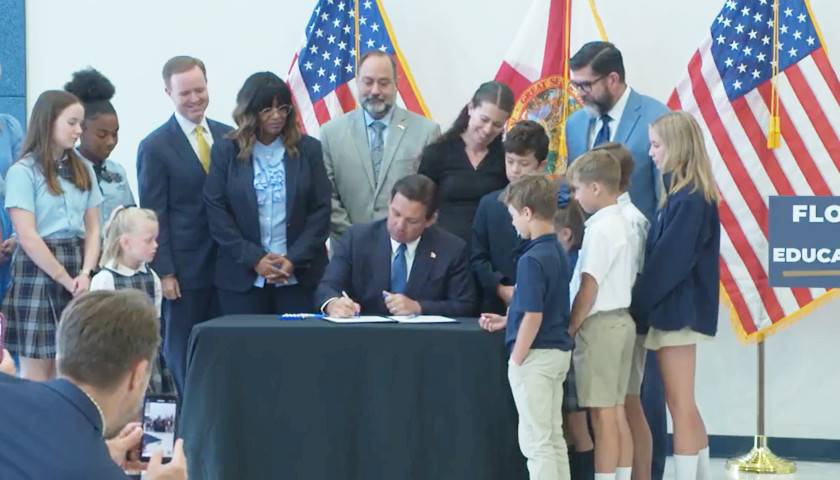by Bethany Blankley
Hurricane season may be over, but recovery efforts continue in Florida and in Lee County, which was hard hit by Hurricane Ian, a Category 4 storm that made landfall on Sept. 28.
On Monday, Lee County announced recovery personnel had “reached another milestone with 4 million cubic yards of debris collected, roughly enough material to fill Hertz Arena to the ceiling 10½ times.” The 30-acre 171,000 square-foot entertainment venue, which seats 7,181 people, is southwest Florida’s premier arena that also hosts NHL, NBA, USBL and other sporting events.
The county said in a news release that recovery personnel operating specialized debris trucks have collected more than 60,000 cubic yards of roadside debris every day for the last two months and moved roughly 20,000 cubic yards from debris management sites to final disposal.
Crews have cleared debris from more than 3,500 miles of county roads, the county said, “the distance from Fort Myers to Minneapolis and back.”
Also on Monday at a news conference in neighboring Charlotte County, Gov. Ron DeSantis announced that the state and generous donors through the Florida Disaster Fund would be providing $60 million to help impacted Floridians with ongoing housing and recovery efforts. On Sunday, the state’s first-ever housing program was launched in Lee County.
DeSantis said the state was “providing building materials and supporting nonprofit organizations to provide repairs so impacted residents can move back into their own homes. Floridians are resilient, and the state stands by them every step of the way as they continue their recovery.”
FDEM coordinator Kevin Guthrie said Florida had launched its first-ever housing program to provide up to six months of temporary shelter to families who were displaced by Hurricane Ian. The first travel trailer was placed on Pine Island in Lee County on Sunday, he said, “another Florida First.”
Florida “continues to work tirelessly on implementing new ways to help impacted Floridians recover,” he said. “In my 30+ years of experience, this is the fastest and most efficient response and recovery that’s ever been taken on by the state of Florida.”
In addition to clearing vegetative debris and collecting construction and demolition debris, crews in Lee County also have cleared more than 117,000 cubic yards of sand from local roads and more than 2,360 cubic yards of vegetative and structural debris from waterways, the county said.
Once crews clear sand from roadways, they clean it of debris and other contaminants and return it to local beaches. Since recovery efforts began, in roughly two months, they’ve cleared and returned roughly 73,000 cubic yards, or 62% of the collected sand, to beaches.
The county says crews will continue to collect and provide every neighborhood with at least a second pass of debris removal. Neighborhoods that received worse damage from both wind and severe flooding could receive more.
Residents in need of housing assistance resources can go to www.leegov.com/storm. They can also find resources and assistance from the state at IanRecovery.fl.gov/Unite and IanRecovery.FL.gov.
Residents who are homeless or living in damaged homes can still apply for federal assistance by Jan. 12, 2023, at www.DisasterAssistance.gov or by calling 800-621-3362.
Recovery efforts continue for residents of Lee and Charlotte counties after they were greatly impacted by a tornado that tore through their neighborhoods in March. After FEMA denied a state funding request to provide them with housing assistance, the state and generous donors also provided assistance.
– – –
Bethany Blankley is a contributor to The Center Square.
Photo “Ron DeSantis” by Governor Ron DeSantis.





